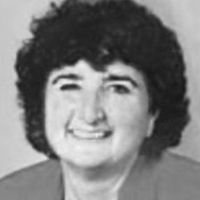Question
How can SLPs improve medication administration and decrease medication errors for patients with swallowing impairment?
Answer
The medication administration process involves these five steps:
- Ordering/prescribing
- Transcribing and verifying the order
- Dispensing and delivering of the medication itself
- Administering the medication
- Monitoring and reporting how and whether the patient took the medication
As SLPs, we do not have control over these processes, but we can have an impact on some of them.
Ordering. In terms of the ordering/prescribing process, we can make sure that we have open lines of communication with the nurse and physician so that they know the patient has a swallowing impairment, and they know the nature of the swallowing impairment. They should know what we have recommended in terms of the easiest, safest way for the person to take medications. If we think crushing is the safest way, then there may be certain medications that they do not take today. We need to keep those lines of communication open so that the physician and the nurse have the information they need from us to make the right decisions in terms of ordering and prescribing the medication.
Verifying/dispensing. Dispensing refers to the pharmacy piece. Again, we want to be sure that we are communicating with the pharmacist. Within the skilled nursing facility or within the hospital, we need to have a system for alerting the pharmacist that this is a patient with dysphagia so alternative formulations can be considered if they are available, and so that the medication is dispensed in the easiest way to swallow. This might mean dispensing the smallest tablet, or the smallest capsule. If the pharmacist is aware that this is someone with a swallowing impairment, there might be some different dispensing methods to use that would actually make swallowing safer for that patient.
Administering. Administering the medication means good communication with the nurse, the patient, and/or the family members who are going to be administering those medications. We can develop specific protocols for each patient to recommend the safest way for them to take the medication. In addition, I always like to be sure that I am giving nurses options. I might say, “Crush those pills that can be crushed. If it can't be crushed, let's put it in apple sauce,” or “Let's make sure that this person has nectar-thick liquid in order to swallow it.” Different pills are swallowed with more or less ease, so we might need a different plan for larger pills or uncoated pills than what we would do for the smaller coated tablets.
There are some compensatory strategies that we can help patients with. “Swallow hard.” “Think about swallowing.” Slowing down the pace, and taking one medication at a time, is helpful. Carbonated liquids can sometimes be a good compensatory strategy to make pill swallowing easier. While the “chin tuck” head position is one that has been studied a lot, it has not really been studied much with pill swallowing. It has been studied with other types of boluses, and it can help to decrease aspiration risk by changing the spatial parameters within the pharynx. That is another compensatory strategy to consider.
What about direct interventions? Is it possible to actually improve pill swallowing? Maybe. There is some work being done with placebo pills that give folks practice with swallowing pills. We start with very small placebos and move to larger pills. Obviously, for our folks in acute care settings, this may not be an appropriate intervention; we are going to need some immediate compensatory strategies for them. But for some outpatients, I have actually given them placebo pills to practice with, in an attempt to improve administration.
Monitoring/reporting. The last piece of the medication and administration process is monitoring and reporting. This is about communication. Everyone needs to be aware of what is working, what is not working, what we are going to keep, and what needs to be changed for this patient. Our role as SLPs is to be sure we are alerting the team to any fluctuations in performance on the part of this particular patient.
Please refer to the SpeechPathology.com course, Pharmacology and Swallowing, for more in-depth information on understanding and managing swallowing-related medication effects, identifying potential impacts of food and thickener on medication effectiveness, and preventing medication errors in clients with dysphagia.

